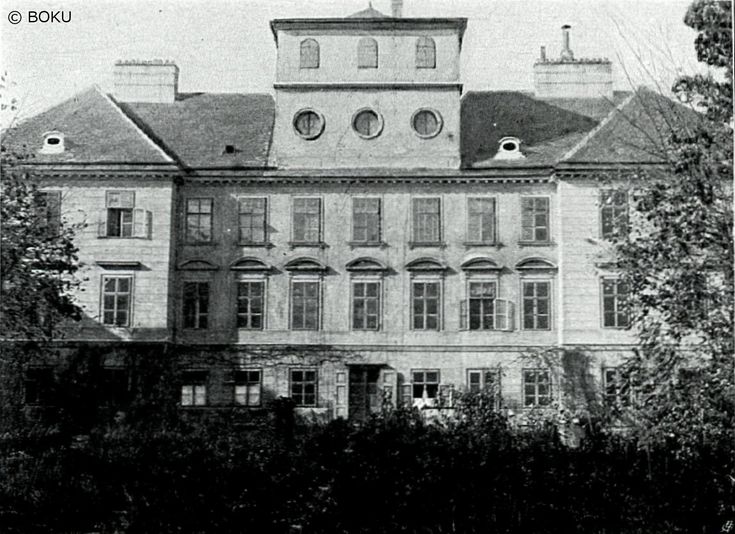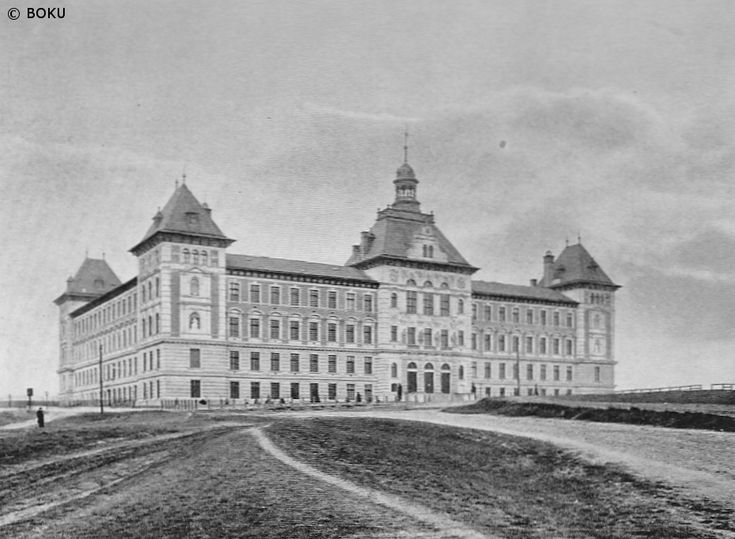The Beginnings and the Road to Türkenschanze


Close to the University of Vienna, in Laudongasse 17 (in the 8th district of Vienna) Palais Schönborn was rented. The “landwirtschaftliche Section” (agricultural section) was established there whereas the “forstliche Section” (forestry section) stayed in Mariabrunn for the time being. These sections were managed by a dean respectively; the entire university was under the direction of the rector.
The professorate consisted of three persons in the first academic year. This first generation of professors was either transferred from Mosonmagyaróvár or appointed from Germany.
At the beginning of 1874, the “Unterstützungsverein für dürftige und würdige Hörer der Hochschule für Bodencultur” (Benefit Society for Worthy Students and Those in Need at the University of Natural Resources) was founded.
According to the concept of the “Hochschule für Bodencultur” (University of Natural Resources), the ultimate closure of the Imperial-Royal Forestry Academy in Mariabrunn was effected in 1875. As a consequence, the forestry section was also relocated to Reitergasse 17 and 19 (today: Skodagasse 14-18) in the 8th district.
In 1878 the field of responsibility for the university transferred from the Ministry of Agriculture to the “Ministerium für Cultus und Unterricht” (Ministry for Culture and Education).
The decree of the Minister for Culture and Education on December 8th, 1881 lead to the introduction of theoretical state examinations for academic studies in agriculture and forestry. The first of these was on the newly founded disciplines; the second was taken from the study program for agriculture or forestry.
The most important change in the 1880s was the establishment of a new field of study, “Culturtechnik” (Agricultural Engineering) in 1883.
Although rural engineering and agricultural engineering had been taught at the university since 1873, there had not been a proper field of study. At the 2nd Agrarian Congress in 1873, the education of agricultural engineering at the University of Natural Resources was encouraged due to the increasing importance of rural engineering. The tremendous damages that had been caused by landslides and mudslides in the torrent basins in Carinthia and Southern Tyrol due to heavy precipitation in the fall of 1882, possibly decisively influenced this development process.
In 1889 there was another change in the auditing. In order to facilitate the state examination, a trisection was established. The first part was held as a general examination, the second one focused on production subjects and the third concentrated on business economics.
The holding of courses for practical agriculturalists and forest engineers was adopted from Germany. The first such course was organized in the winter of 1894.
While the teaching and auditing was constantly developed, the question related to the location remained unsolved for a long time. After numerous difficulties and long negotiations, this was brought to a successful end with the Ministry of Finance and the Ministry of Culture and Education in 1984. The relevant bodies decided on a new construction at the Türkenschanze in Ober-Döbling. The construction work of those buildings (main building and chemistry laboratory) lasted almost two years. They have since been the center of BOKU. On December 5, 1896 the inauguration celebrations for Rector Wilhelm Exner took place.
Chief engineer Alois Koch planned the buildings for 22 chairs including collections and laboratories. The buildings comprised the rooms for the Rector, a library, 9 lecture halls, 6 drawing studios, one examination and conference hall, as well as official residences. The large lecture hall in the chemistry building accommodated 120 students.
